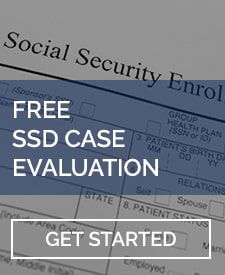As a Florida SSD attorney firm, we find muscular dystrophy disability to be a common condition used in SSD applications. A muscular dystrophy is a group of diseases that causes progressive muscle weakness and muscle loss. This group of diseases incites abnormal genes to interfere with the production of proteins needed to form healthy muscles, resulting in impaired muscle strength. Most individuals suffering from muscular dystrophy begin to notice symptoms in early childhood. In addition, the condition is more likely to affect young boys than young girls.
The Four Main Types of Muscular Dystrophy Disability
There are four main types of muscular dystrophy disability. Each type is defined by the location of where the body symptoms first began:
- The first type is myotonic. This is the most common form of muscular dystrophy and is characterized by an inability to relax your muscles. Typically, the face and neck areas are the first to be affected.
- The second type is facioscapulohumeral. This type affects the shoulder blades and arms, with potential deformity in how the shoulder blades are shaped.
- The third type is congenital. This type is progressive and can be either mild or severe.
- The fourth type is limb-girdle. This type affects the hip and shoulder muscles first causing difficulty with ambulation.
Typical symptoms of muscular dystrophy include muscle weakness, imbalance, altered gait, muscle pain, and even learning disabilities. More severe cases include shortness of breath, curvature in the spine, heart problems, and difficulty swallowing. While there is no current cure for this condition, certain medications and physical therapy can help to slow the progression of the disease.
If you suffer from muscular dystrophy and are experiencing any of the symptoms noted above, you are more than likely struggling with not only performing daily activities but also sustaining employment. In this situation, you may be eligible for Social Security Disability (SSD) benefits. The SSD program provides monetary benefits, along with healthcare coverage, for individuals who are unable to work due to a medical condition. To receive these benefits, you will need to start the application process with the Social Security Administration (SSA). Once an application is submitted, the SSA will review your claim for several factors.
The Factors the SSA Will Review
- The first factor reviewed is whether you are currently working or earning an income above substantial gainful activity (SGA). If you are working and earning an income higher than the allotted amount, the SSA will deem you technically disqualified for the program. If you are not working or you are unable to earn SGA-level earnings, the SSA will then consider
- As long as the SSA finds you have a severe impairment, the agency will next consider whether you meet the SSA’s listing 11.13 for Muscular Dystrophy. This listing requires medical evidence documenting disorganization of motor function in two extremities resulting in extreme limitations in the ability to stand up from a seated position, to balance while standing or walking, or to use the upper extremities. Or, you can try to prove you meet this listing by showing you suffer marked limitations in understanding, remembering, or applying information; interacting with others; concentrating, persisting, or maintaining pace; or adapting or managing oneself. More often than not, if you suffer from muscular dystrophy, you will likely try to prove your disability under this listing.
- If you do not have the medical evidence necessary to support listing 11.13, then the SSA will determine what exactly your functional capacity is. Your residual functional capacity (RFC) is the most you can do in spite of your functional limitations. In terms of muscular dystrophy, the SSA will determine how your limitations affect your ability to work. The agency will consider how long you are able to sit, stand, and walk for at one time. Your ability to lift and carry certain weights will also be considered. Depending upon the limitations in those areas, the SSA will determine the type of work you are capable of performing. This is rated in terms of sedentary, light, medium, or heavy. Because muscular dystrophy may also affect your mental processing, the SSA will consider any difficulties you may have with memory, processing speed, or concentration.
- Once the SSA has determined your functional capability, the agency will then consider whether those limitations prevented you from performing your past relevant work. This is work you have performed within the past fifteen years. If you were not able to perform past relevant work, then the SSA will consider if there are any other jobs available in the national economy in which you could perform with those limitations. If the answer is that there are none, you will be found disabled.
Depending upon the severity of your muscular dystrophy disability, you may be a good candidate for SSD benefits. Ask your doctor what his/her opinion is regarding your employability. If your doctor doesn’t think you can maintain regular full-time employment without significant accommodations, you should contact a Florida SSD attorney at our firm for help with applying for SSD benefits.
While there are numerous conditions that can affect your ability to work, muscular dystrophy tends to be one of the more disabling conditions. This is because the condition affects your muscles, causing physical limitations. Also, because this condition is progressive and does not have a cure, it is likely that at some point after being diagnosed, your disorder will progress to a point where you are not physically capable of getting up and going to work every day. If you find yourself in this position, the SSD program may be the right fit for you.
It is highly recommended that you contact a Florida SSD attorney with the LaBovick Law Group to help you apply for SSD benefits. Using an attorney can oftentimes help speed up your claim because an experienced attorney knows the process and knows how to present the case to the SSA. However, keep in mind no one has any control over how long it takes the SSA to come to a conclusion on your case. You can take steps to make it easier for the SSA to approve your case in the hope that the agency will approve it faster, but no one can control how long the SSA will take to make a decision on your muscular dystrophy disability claim.






